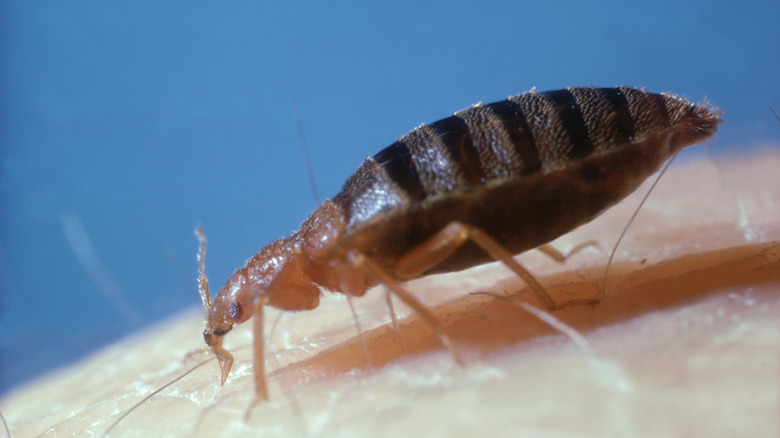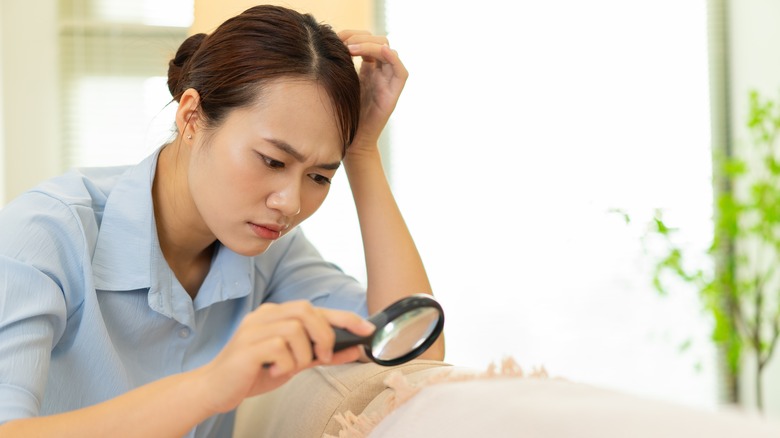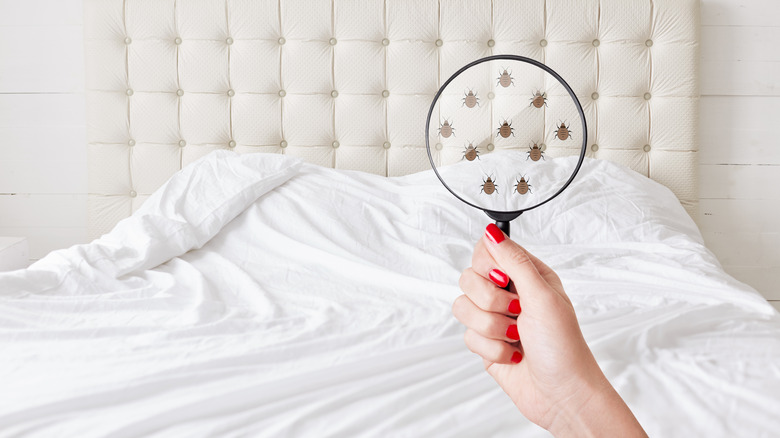Can Rubbing Alcohol Really Eliminate Bed Bugs For Good? Our Entomologist Weighs In
Bed bugs are often labeled as one of the most difficult pests to get rid of. The tiny insects can be difficult to spot with the naked eye, but once they are in your home, they spread quickly. When they take over homes, those affected often take to the internet to search for a quick solution. You can find all sorts of DIY remedies for getting rid of bed bugs online. Rubbing alcohol is one of the most common recommendations, but does it really work? Dr. Jim Fredericks, Board Certified Entomologist and Senior Vice President of Public Affairs at the National Pest Management Association (NPMA), revealed that it is not an effective treatment against bed bugs.
"We do not recommend trying any DIY treatment methods for bed bug infestations," he shared while speaking exclusively to House Digest. "Those who suspect an infestation should contact a pest control professional immediately." He went on to explain why it is so important to act fast when it comes it bed bug infestations. "Bed bug populations can grow very quickly once they have been introduced and can be difficult to control." If you notice signs of bed bugs, ditch those homemade hacks and do not hesitate to contact a professional.
How to identify bed bugs
It is important to know how to identify bed bugs so that you can get rid of them permanently. They are not an easy infestation to treat. "In fact, according to an NPMA survey, 76% of pest professionals say they are the hardest bug to eradicate," Dr. Fredericks shared while speaking exclusively to House Digest. The entomologist also provided tips on how to check for bed bugs when traveling. The pests are often spread from hotel guest to hotel guest, so you should be sure to take precautions during any upcoming trips.
"Thoroughly inspect the entire room before unpacking, including behind the headboard, under lights, and inside dressers, drawers, sofas and chairs," Dr. Fredericks explained. "Pull back the sheets and inspect the mattress seams and box springs, particularly at the corners and edges, for pepper-like stains, spots, or shed bed bug skins. It's also important to take precautions upon returning home from a trip. Launder clothes upon returning home. Drying clothes on high heat will kill all stages of stowaway bed bugs." Luggage can also carry these critters indoors, so you should store it in a basement or garage upon return until you can thoroughly inspect it, according to Dr. Fredericks.
How to check your living space for bed bugs
Of course, your hotel room and luggage are not the only places you might find these pests. You should check your couch for bed bugs along with other areas. "Look for evidence of bed bugs before settling into a hotel, rental property, or a friend's home," Dr. Fredericks shared while speaking exclusively to House Digest. When examining a mattress for bed bugs, you need to look out for exoskeletons and fecal spots. These are commonly found in the crevices and seams. The fecal matter will appear as small reddish-black or brown dots.
You might have a bed bug problem if you find those spots on your mattress or any other furniture. Finding bed bug skins or eggs is also a sign of an infestation, according to Dr. Fredericks. One of the most obvious ways to identify an infestation is waking up to bed bug bites on your body. The entomologist detailed what these itchy bites look like on the skin so that you will know exactly what to look out for if you ever experience them. He explained that they appear as, "red, itchy bite marks, especially on the legs, arms, and other body parts exposed while sleeping."
Dr. Fredericks also shared that not every person with an infestation will experience bites. It might be best to stick to searching for the previously mentioned signs of bed bugs to confirm whether you do or don't have the pests in your home. A flashlight will help you during your inspections, according to Dr. Fredericks.


